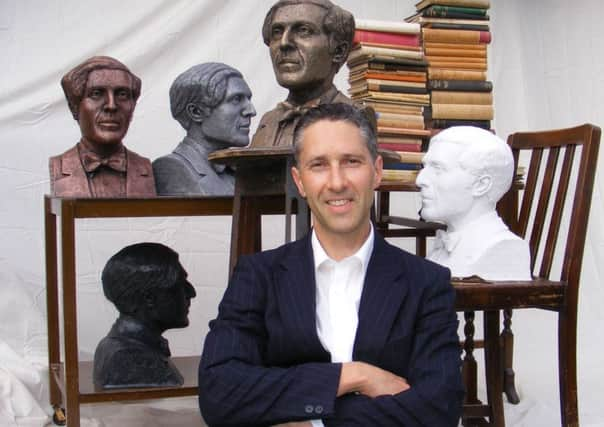Sculpture recalls forgotten Yorkshire war poet


Wolfe was a best-selling poet in the 1920s and 1930s, whose verses from “Requiem: The Soldier” are still read at Remembrance Day services today.
In 1930 he was in the running for Poet Laureate, but the next year was attacked by his literary rival Siegfried Sassoon - best known for his war poems about the horror and brutality of trench warfare - in a book parodying his poetry.
Advertisement
Hide AdAdvertisement
Hide Ad“His popularity flagged after that. It was the beginning of the end of his career,” said his great-grand nephew Anthony Padgett, who has cast five heads to reflect the five main areas of the life and work of a man he sees as being “a bit like the James Bond of poetry - a very suave, sophisticated figure.”
Wolfe (1885 - 1940) was born in Milan, Italy, but raised in Bradford where he was educated at Bradford Grammar School.
Aged just 17, he got a place at Oxford where he gained a 1st, then rose to senior positions in the Civil Service at Whitehall, with the Board of Trade and the Ministry of Labour.
His attempts to enlist were turned down because of his ill health and he spent the war in charge of supplies and regulation of labour in the Ministry of Munition.
Advertisement
Hide AdAdvertisement
Hide AdIn the 1920s he began publishing poetry to great acclaim, with some of his verses being set to music by composers including Gustav Holst.
He was one of the favourities to become Poet Laureate, against Rudyard Kipling and WB Yeats.
January 5 - the 75th anniversary of Wolfe’s death and the 135th anniversary of his birth as he died on his birthday - will see the opening of an exhibition of the sculpture at Westminster Reference Library.
Later that year Padgett hopes the bronze bust will be placed in Bradford, preferably Lister Park, near where Wolfe lived at Mount Royd, but more likely close to the library in the newly revamped city square.
Advertisement
Hide AdAdvertisement
Hide AdHe said: “It’s going to be a donation. For me it is the fun of doing it and carrying on the name of a person who deserves not to be forgotten.”
Others are earmarked for Oxford and New York, but he still has to find a home for one in London.
Padgett, who knew Wolfe’s daughter Ann, said: “His was a more traditional style of poetry which fell out of fashion after the war, but a lot of the work is very relevant because it addresses issues of belief and the modern world. After the war everything became very nihilistic.
“There are a number of people who know of his work, but not as many as should, I think he’s a forgotten Bradfordian who is quite an aspirational figure.
Advertisement
Hide AdAdvertisement
Hide Ad“Most people would have just one bust, but he lived so many lives, each with great intensity and productivity, that it seems appropriate to have one associated with each life.”
He still hopes to find a place for one of the heads in London: “The sculptures in bronze, silver, gold, marble and granite and each will go to key cities associated with his life and works.
“Despite contacting the Whitehall government departments, gentlemen’s clubs, museums, galleries, poetry societies and many municipal parks where Wolfe wrote no one is interested to take a head, even as a donation. If you have a site to propose then please go along to the exhibition whilst it is in London and let me know.”